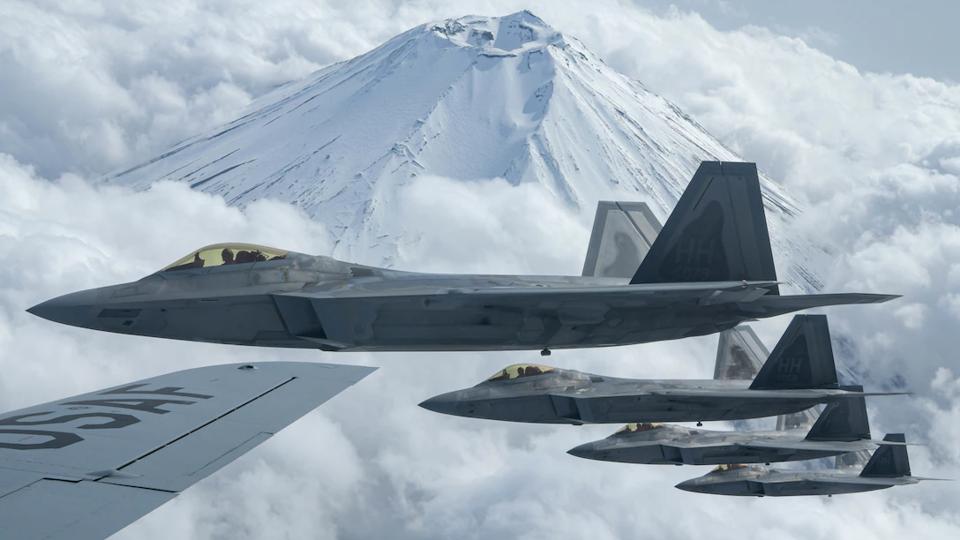
Anticipating War With China, The U.S. Air Force Is Fanning Out Across The Pacific
08:00am EDTAerospace & Defense
I write about ships, planes, tanks, drones, missiles and satellites.
For years, the U.S. Air Force concentrated its warplanes at just two bases in the western Pacific: for fighters, Kadena Air Force Base in Japan’s Okinawa prefecture; and for bombers and big support planes, Guam’s Andersen Air Force Base.
Beijing eyed these mega-bases and devised a simple strategy for suppressing U.S. air power in the region. Build a couple thousand non-nuclear ballistic missiles and, in wartime, lob them at the bases until their runways, aprons, hangars, fuel tanks and warehouses are nothing but craters.
After years of build-up, the Chinese rocket force possesses around 1,300 ground-launched missiles with sufficient range to hit Kadena and Andersen from mainland China.
The USAF is keenly aware of the threat. It has its own plan for dodging the missile barrages. The idea is to spread out hundreds of warplanes across potentially dozens of smaller bases—thus diluting the striking power of China’s rocket force.
The Air Force won’t say exactly which bases are part of its plan, but it’s possible to make educated guesses. American territories and small island countries offer the most dependable facilities. Arguably the most important bases—in the Philippines—are accessible only at the whim of that country’s mercurial president.
The emerging map of the USAF’s expanding base network also reveals where the service has potential airfield gaps, most glaringly in the Philippine Sea east of Taiwan. In that gap, the U.S. Navy’s Pacific Fleet might lend its sister service a helping hand—and deploy some of its 10 aircraft carriers and big-deck assault ships.
The Air Force maintains a master list of what Gen. Kenneth Wilsbach, the head of Pacific Air Forces, described as “every single piece of concrete” in the Pacific region.
“We have a plan for all of those airfields, and some of them meet the criteria and they are therefore part of what we call ‘clusters,’” Wilsbach told Air Force Magazine last year. Some of the bases are main hubs in the network; others are spokes.
Aircraft, fuel, weapons and supplies—not to mention people—would move through the hubs to the smaller spoke bases. The more often people and stuff move, the safer they are from Chinese rockets. That’s the theory.
An alphabet soup of concepts underpins the new base network. The practice of breaking up 20-plane fighter squadrons and dispersing small detachments of jets to outlying bases is called Agile Combat Employment, or ACE. Bomber squadrons are practicing their own dispersal as part of the new Bomber Task Force operation, or BTF.
The Air Force plans to reinforce the most austere airfields with pre-packed sets of equipment under the so-called Deployable Air Base System, or DABS.
To move munitions along the base network, the flying branch has developed a procedure it calls “tactical ferry,” or “tac-ferry,” whereby a fighter such as an F-15E loads up with more bombs than it could ever use in combat and delivers them to whichever small airfield it’s going to be flying from. In essence, saving the weapons for later.

Palau, Micronesia and the Marianas—all small island countries in the mid-Pacific—are keen to host American forces. That adds at least another half-dozen airstrips to the USAF’s list. The Air Force already periodically stages bombers at Darwin in Australia. Add that to the list, too.
Less certain are the airstrips that lies closest to China and the likeliest war zone, Taiwan. They’re all in the Philippines—Clark air base and Thitu Island are two good examples. Before the election of volatile strongman Rodrigo Duterte in 2016, the USAF probably could count on Philippine bases during a clash with China.
But Duterte has courted China and criticized the United States. His administration isn’t a dependable U.S. ally. When Duterte leaves office in 2022, U.S.-Philippine relations could change. And the ACE base network could grow.
It might need to grow more. After all, China’s still building rockets.
I’m a journalist, author and filmmaker based in Columbia, South Carolina.
No comments:
Post a Comment